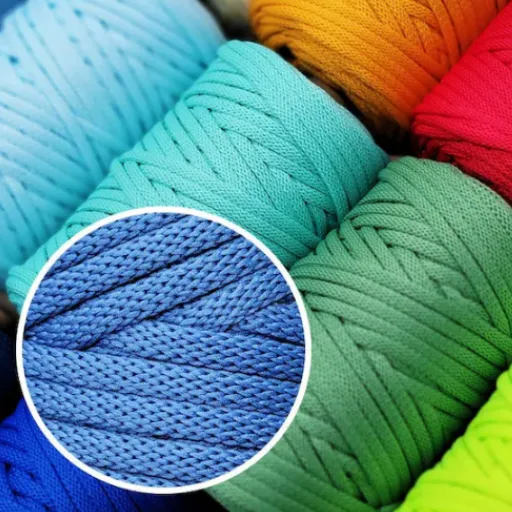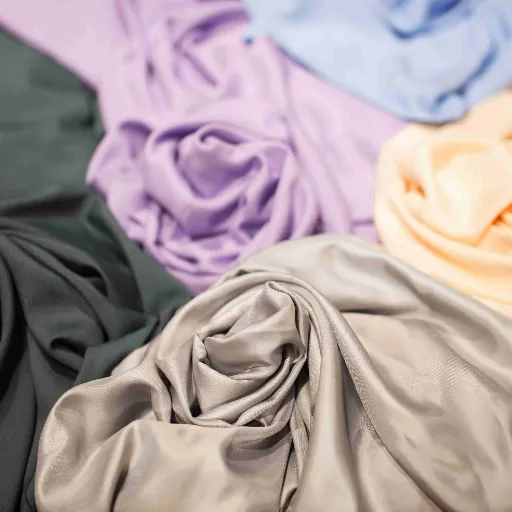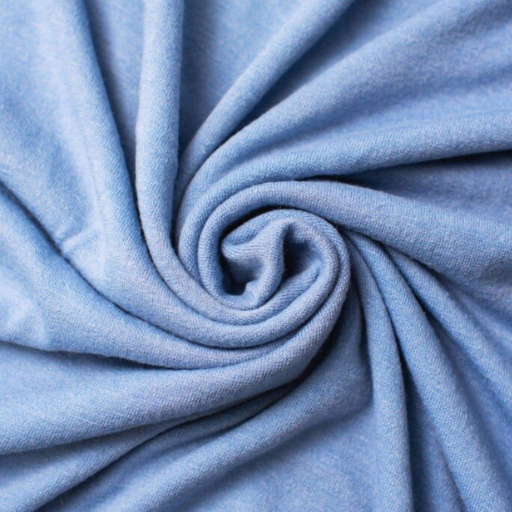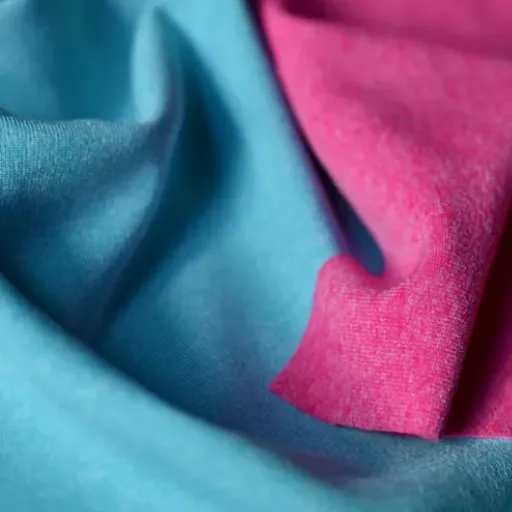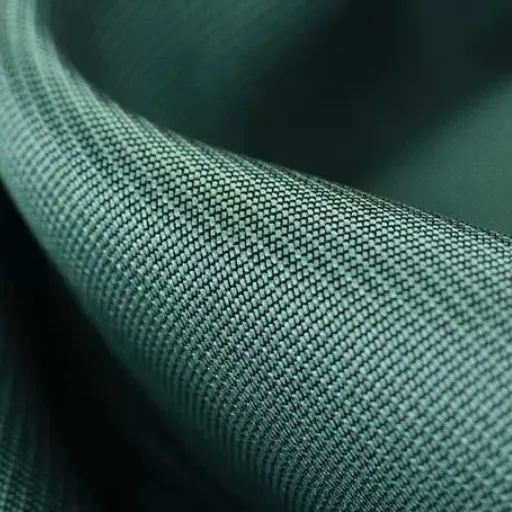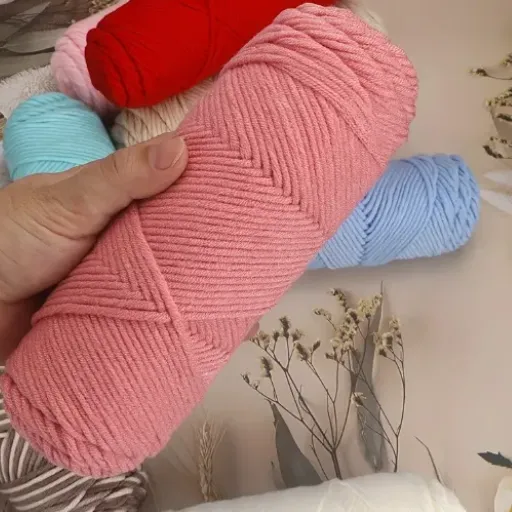The renowned Viscose Spun Fiber takes center stage as a material with a misunderstood reputation in the textile industry. The journey from raw cellulose to soft, durable yarn and finally to fabric is a mixture of science, labor, and innovation. This blog post guides the reader through the fascinating journey of viscose spun fiber, exploring its unique characteristics, manufacturing process, and significance in today’s fashion and sustainable era. Whether you’re a textile enthusiast, a sustainability advocate, or simply an average, curious person intrigued by what sets your favorite fabrics apart, this article will serve as a stepping stone to learning about the world of viscose. Let’s explore how this fantastic fiber channels its functionality with elegance to create the fabrics we cherish today.
Introduction to Viscose
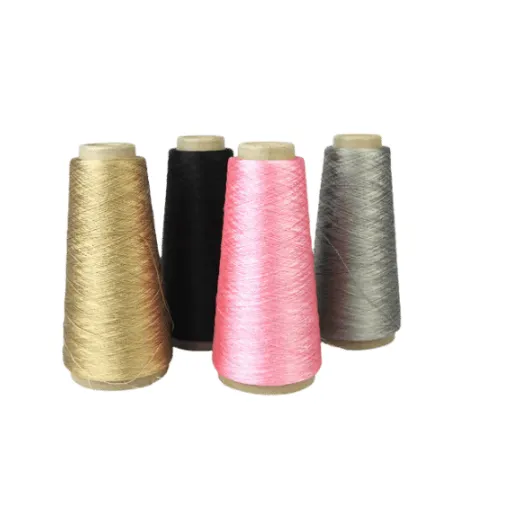
Viscose, or rayon in other terms, is a semi-synthetic fiber manufactured from cellulose, usually extracted from wood pulp. It is a versatile entity, very soft to the touch, with a texture similar to silk; hence, it is sought after for its ever-so-lightweight and comfortable fabrics. The manufacturing process chemically treats cellulose to give it a fiber form that can be spun into threads. Due to its high absorption capacity, breathability, and aesthetic appeal when laid out, viscose is widely used in clothing, upholstery, and as an interfacing material. Its affordability and the inexpensive look of natural fabrics, such as cotton and silk, further add to its attractiveness.
Origin and History of Viscose
Developed as a cheaper alternative to silk in the late 19th century, viscose thus acquired another name as rayon. Production was first attempted back in 1884 by French scientists, Hilaire de Chardonnet and Louis Vavasseur. But the word “viscose” was introduced only in 1892 by English chemists Charles Frederick Cross, Edward John Bevan, and Clayton Beadle. They derived the word from the viscous solution that flowed during processing. It gained popularity as an alternative fabric at the dawn of the twentieth century in response to the exorbitant tariffs charged on natural silk. It rapidly transformed the textile industry, being an all-purpose, cost-effective fiber that could mimic the luxury of natural materials yet was simpler to produce on a practical scale. Today, viscose remains a key component in many textile operations, owing to its versatility and softness.
Versatility in Textiles
The viscose comes into its own as a fiber, exhibiting the properties of proper cotton, silk, or wool, with the added benefit of extreme affordability. Backed by the latest data and insights, it can be safely concluded that viscose remains equally celebrated across industries due to its adaptability. It is used for couture-grade, lightweight, and breathable apparel in the fashion industry, in-home furnishings for beautiful drapes and upholstery, and in various industries for a wide range of applications, from tire cords to medical consumables. From the multiple applications of this fiber, as well as its ability to combine well with other fibers that enhance the value and performance of a finished product, its versatility is evident.
Characteristics of Viscose Fabric
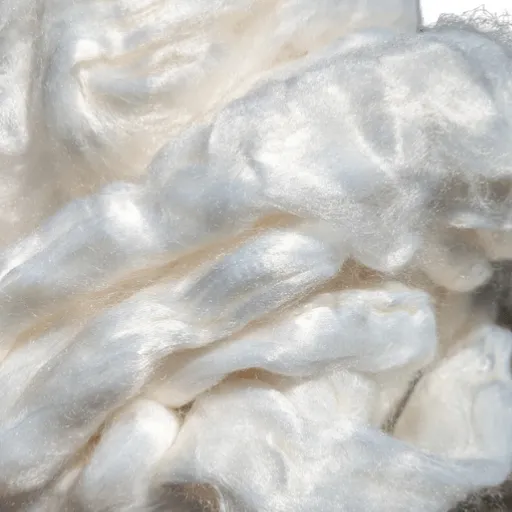
- Soft and Smooth Texture: Viscose fabric is renowned for its silky and smooth texture, making it both comfortable to wear and touch.
- Breathable: It allows air to pass through easily, making it an excellent choice for warm and humid climates.
- Lightweight: The fabric is lightweight and drapes well, giving it a luxurious appearance.
- Bright and Vibrant: Viscose holds dye exceptionally well, resulting in bright and vibrant colors.
- Moisture-Absorbent: It is highly absorbent and can wick moisture, enhancing wearer comfort.
- Blending Capability: Viscose blends seamlessly with other fibers to enhance durability and functionality.
Properties of Viscose Fiber
Viscose fiber exhibits unique properties that make it versatile and appealing for a wide range of applications. Some key properties include:
- Breathability: Viscose fabric allows air to circulate, making it comfortable to wear in both warm and cool climates.
- Softness: It offers a smooth and silky texture, providing a luxurious feel against the skin.
- High Absorbency: The fiber is highly absorbent, making it suitable for dyeing with vibrant colors.
- Eco-Friendliness: Modern production methods aim to reduce environmental impact, though traditional viscose manufacturing can involve significant chemical use.
- Biodegradability: Viscose is derived from cellulose, making it biodegradable under the right conditions.
- Versatility: Due to its flexibility, it can mimic the texture and appearance of other fibers, such as cotton, silk, or wool.
Softness and Breathability
The incredible softness and breathability of viscose make it so popular for use in apparel and home textiles. The smooth texture of viscose is very much like that of natural fibers—a cotton or silk—feeling luxurious against the skin. It breathes well, providing much-needed comfort during the warm season, and allows for air circulation to wick moisture from the body. It suits everything from the finest dresses and shirts to loungewear, with the perfect balance of style and functionality.
Manufacturing Process of Viscose Yarn
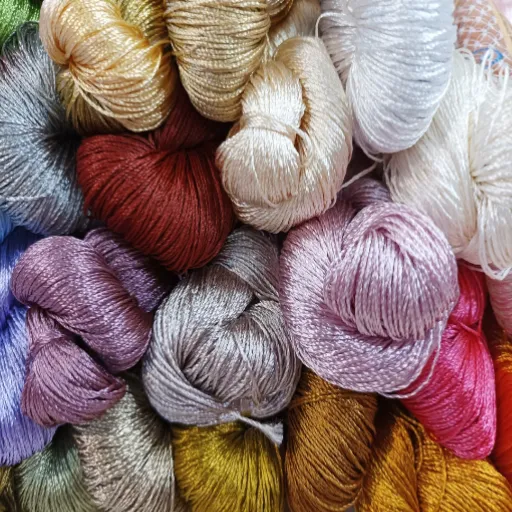
Making viscose yarn involves several vital steps aimed at transforming all the raw materials into a versatile fiber. Cellulose is extracted from wood pulp or cotton linters to serve as the base material. Then, the cellulose is treated with sodium hydroxide to form alkali cellulose, which is aged to achieve the required chemical composition. After aging, the alkali cellulose combines with carbon disulfide to form cellulose xanthate, which is then dissolved in sodium hydroxide, yielding a thick, viscous solution known as viscose.
The next step involves filtering and deaerating the viscose solution to remove impurities and air bubbles. It is extruded through microspinnerets into a coagulation bath, wherein cellulose solidifies into filaments. These filaments are stretched and washed, followed by a treatment that enhances filament strength and luster. Afterward, the filaments are dried and wound onto yarn. With all these steps carefully controlled, high-quality viscose yarn can be crafted for many textile uses.
Raw Materials Used in Viscose Production
Cellulose is the primary raw material used in viscose production, derived usually from wood pulp or cotton linters. These raw materials are selected for their high cellulose content and the ease with which they can be chemically transformed into viscose. Additional chemicals, such as sodium hydroxide, carbon disulfide, and sulfuric acid, are also necessary to complete the transformation of the raw material to viscose. Water plays a crucial role, as it is used in the washing and spinning stages of the entire process. More importantly, the choices and quality of these raw materials are of significant concern to ensure that the properties of softness, durability, and versatility of the final product are bestowed upon them, the features that make this fiber important to the textile industry.
Modern Innovations in Viscose Manufacturing
Recent developments have been made in viscose manufacturing to improve sustainability and address environmental concerns. One major innovation will involve establishing closed-loop production processes, wherein chemicals such as carbon disulfide and sodium hydroxide are recycled and reused, thereby reducing waste and pollution. The use of alternative raw materials also helps ensure responsible sourcing, such as certified sustainable wood pulp or bamboo. Researchers are developing enzymatic approaches as greener alternatives to conventional chemical methods. These new methods not only accommodate the tightening environmental regulations but also the growing demand from consumers for green textiles.
Common Applications of Viscose
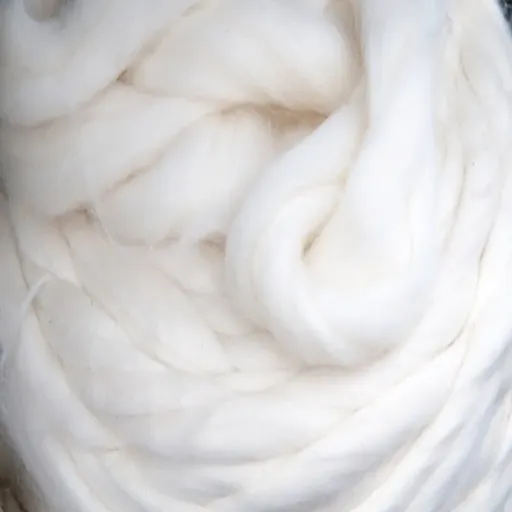
Viscose finds application in many fields due to its versatility and affordability. Some of the common uses include:
- Apparel: Viscose fabric is often used for dresses, blouses, shirts, and linings due to its soft texture, which mimics the feel of natural fibers such as silk or cotton.
- Home Textiles: Smooth to the touch and very durable, they are a favorite for curtains, upholstery, bed sheets, and rugs.
- Industrial Uses: Due to its strength and absorbency, viscose has been applied to tire cords and hygiene products.
- Non-Woven Products: Viscose is used in wet wipes and medical textiles for softness and biodegradability.
Fashion and Apparel
Viscose has always held a supreme status in the fashion industry and apparel segments due to its comfort, versatility, and luxurious texture. The latest search engine data indicate that an increasing number of consumers are seeking sustainable and eco-friendly clothing, and when appropriately produced, viscose aligns well with this niche. It replicates the texture of silk, cotton, or wool and is therefore used to create designs that range from dresses and blouses to scarves and suits. Designers prefer it because it can be dyed easily to brilliant colors that do not fade. These attributes, along with good breathability and lightness, have ensured that viscose remains a favorite in both haute couture and ready-to-wear fashion. However, with an increasing awareness of the environmental damage that entails, the time of sustainably sourced viscose is hopefully dawning, and this shift goes hand in hand with the broader industry’s adoption of greener practices.
Industrial Uses of Viscose
Not only does viscose hold value in the fashion industry, but it also plays a vital role in various industrial applications. Due to its absorbency and softness, one of its primary applications is the manufacturing of industrial wipes and cleaning cloths. Strength and durability make it suitable for use as tire cords for vehicles. The medical field utilizes it for surgical dressings, bandages, and hygiene products due to its soft, comfortable fabric and its ability to maintain cleanliness. Advancements in technology bring an opportunity for the continuous evolution of viscose, providing fresh approaches for other industrial needs.
Viscose vs. Other Fibers
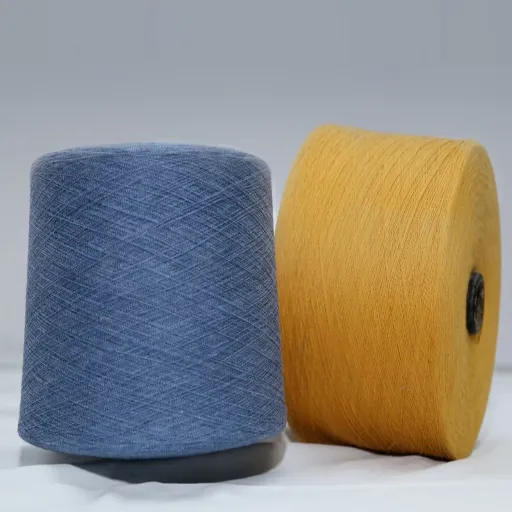
In other words, viscose has a unique balance of properties compared with other fibers. In contrast to natural fibers like cotton, viscose is more affordable and can even replicate the softness and smoothness of luxury materials, such as silk. Polyester is a synthetic fiber; thus, conversely, viscose has better air permeability and is suitable for warm environments and garments meant to lie against the skin. However, due to its excellence, viscose does not perform well in specific topographies, unlike polyester, which is highly functional. Each fiber has its advantages; the choice depends mainly on the application and performance factors.
Comparative Analysis with Natural Fibers
There are significant distinctions when comparing viscose to natural fibers (cotton, wool, silk) in terms of texture, strength, and sustainability. Although it is obtained from different natural sources such as wood pulp, viscose is a highly chemically processed fiber and therefore, a semi-synthetic fiber. The soft and breathable nature of the fiber, similar to that of cotton and silk, enables it to be used for lightweight clothing. But generally, it cannot stand up to cotton in terms of wear, nor silk in terms of luxurious durability. Additionally, it is a poor heat insulator compared to wool, which is an excellent insulating fiber; this makes viscose a less suitable candidate for cold-weather garments.
From a sustainability perspective, natural fibers such as organic cotton and wool are considered beneficial, as they have environmentally friendly production processes. Meanwhile, unless certified as being sustainably sourced, viscose has been cited as a contributor to deforestation and environmental degradation. The choice becomes somewhat dependent on an individual’s value judgment, weighing comfort and ecological considerations against functional requirements for the end use.
Viscose and Polyester: A Detailed Comparison
When comparing viscose and polyester, key differences emerge in terms of their origin, properties, and environmental impact. Viscose, derived from plant-based materials such as wood pulp, is a semi-synthetic fiber that emphasizes breathability, softness, and a flowy texture, making it ideal for apparel and textiles that aim for a natural feel. Polyester, on the other hand, is entirely synthetic, created through chemical processes that involve petroleum, and is prized for its durability, wrinkle resistance, and ability to retain vibrant colors over time.
From an ecological perspective, viscose consumption is sustainable because it decomposes more readily than polyester, which poses issues due to its non-biodegradable nature. However, it can be produced in a manner that is destructive to the environment because the manufacturing of unsustainable viscose involves the use of toxic chemicals and promotes deforestation. Polyester, although considered more energy-intensive to produce, is now being recycled.
Caring for Viscose Fabric
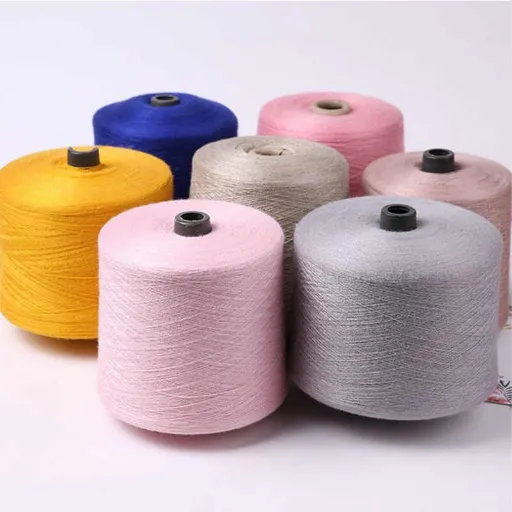
Delicate and brittle, viscose fabric can easily tear if not properly handled. You may find these helpful in the care of viscose:
- Washing: The best method is handwashing viscose under running water with some mild soap. The modern detergents rinse out easily, unlike the old lye soap. Do not twist or wring any such clump of fabrics, as the ready-to-wear conceals many intricate paint stitches. When machine washing, it is advisable to use a mesh laundry bag and select the delicate cycle.
- Drying: Spread the material on a towel and allow it to dry sitting in the sunlight. Do not hang a damp viscose, as it will cause it to stretch or deform. Please do not tumble dry.
- Ironing: Remember to set your iron to a low temperature and press only the inside of the fabric.
- Storage: Hang viscose spun fibre clothes in a warm room or dry them. Do not fold them if you are hanging them; the cabinet will be impossible to close.
Washing and Maintenance Tips
- Dealing with Stains: Treat any spots on your viscose items by gently blotting the area with a clean, damp cloth immediately. Rubbing should be avoided, as it may damage the fabric’s mass. Appropriately, mild detergent may be utilized on the spot to be washed.
- Protecting Colors: When washing clothes made from colored viscose spun fiber, combine them with other articles of clothing of the same color to help reduce color transition and fading. To protect the outer sides, turn them inside out.
- Minimizing Wrinkles: Reshape damp clothes carefully after washing to help avoid creasing and maintain the garment’s structure. Lay it down or hang it neatly to eliminate the need for ironing.
Storage Recommendations for Longevity
To blow up, run, wash, or take viscose-spun fibre clothing out of the sunlight is paramount to me, as this can damage them eventually. Whenever I am looking to keep them organized, I always fold them neatly without putting them on hangers. If it’s necessary to put the clothes on hangers, then I will use some fun ones. Lotus will also be stored on hangers in an appropriate garment cover, as this prevents it from collecting dust and mold, and ensures the soft texture and color of the garment remain intact.
Reference Sources
Here are five credible and authoritative sources on “viscose spun fibre” you could use to verify the accuracy of your article:
| Source Title | Institution | Description |
|---|---|---|
| Spun Rayon Yarns – Producing Staple Fiber | University of Arizona | This article discusses the viscose process for producing high-grade rayon yarn from wood pulp or cellulose. |
| Fiber Content Determination of Linen/Viscose Blends Using NIR Spectroscopy | BioResources (North Carolina State University) | This research examines the composition and properties of viscose fibers, with a focus on blends with linen. |
| Hairiness Values of the Polyester/Viscose Ring Spun Yarn Blends | Academia.edu | A study on the characteristics of polyester/viscose yarn blends, including fiber properties and their impact on yarn quality. |
| Textile Materials Explained – Green Jax Project | University of North Florida | An educational resource explaining various textile materials, including viscose, its production, and applications. |
| What Is Viscose Fabric? Is It Better Than Cotton? | Savvy Sleeper | A detailed overview of viscose fabric, its properties, and comparisons with other materials like cotton. |
Frequently Asked Questions (FAQs)
What is viscose rayon, and how is it made?
Viscose rayon is a type of semi-synthetic fabric made from regenerated cellulose, derived from natural sources like wood pulp. The production of viscose involves treating wood pulp with chemicals such as sodium hydroxide and carbon disulfide, which transforms the cellulose into a viscous solution. This solution is then spun into yarn and woven into fabric.
How does the viscose production process work?
The viscose production process begins with dissolving wood pulp in sodium hydroxide, resulting in the formation of alkali cellulose. This is then treated with carbon disulfide to produce viscose, which is extruded through spinnerets to form filaments. These filaments are then regenerated into a solid form and spun into yarn, resulting in a versatile fabric.
What are the advantages of using viscose fabric?
Viscose has several advantages, including its silk-like feel and breathability, which make it a comfortable material for wear. It is a biodegradable fabric, derived from natural wood pulp, and is often blended with other fibers to enhance its properties. Viscose is also known for its vibrant colors and ability to drape well, making it popular for clothing and home textiles.
Can viscose be blended with other fibers?
Yes, viscose can be blended with various fibers, such as cotton and polyester, to create fabrics that combine the best attributes of each fiber. For instance, a blend of viscose and cotton can enhance softness and breathability, while the addition of polyester can improve durability and wrinkle resistance.
What are the disadvantages of viscose?
While viscose has many benefits, it also has some disadvantages. It can be less durable compared to synthetic fabrics like polyester and may require special care when washing. Additionally, the viscose production process can be environmentally taxing if not managed sustainably; however, eco-friendly viscose options are becoming increasingly prevalent.
Is viscose biodegradable?
Yes, viscose is biodegradable as it is made from natural materials, primarily wood pulp. This means that, unlike synthetic fabrics, it can decompose in the environment under the right conditions, contributing less to landfill waste.
What types of garments are made from viscose?
Viscose is used to create a wide variety of garments, including dresses, blouses, and linings, due to its soft texture and drape. It is also used in home textiles such as curtains and upholstery, where its luxurious feel is valued.
How does bamboo viscose differ from conventional viscose?
Bamboo viscose is a type of viscose explicitly made from bamboo pulp. It follows a similar production process to conventional viscose but is often marketed as more sustainable due to bamboo’s rapid growth and lower environmental impact. Bamboo viscose also exhibits natural antibacterial properties, making it an appealing choice for clothing.
What is the future of viscose in the textile industry?
The future of viscose appears promising as demand for sustainable and eco-friendly fabrics continues to grow. Innovations in the viscose production process aim to reduce environmental impact, and the development of new sources, such as bamboo, may further enhance its appeal. As consumers become more conscious of their choices, viscose is likely to maintain its popularity as a versatile and biodegradable option in textiles.









